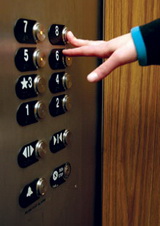Types of Elevators
Like so many things in this life, most of us take elevators for granted without stopping to think of all the mechanical and electrical and even scientific intricacies that make them work, and safely at that! Whether you are a builder looking to have elevators installed in a new construction or a person who needs to add an elevator added to an existing building, learning about the types of elevators is an eye-opening experience.
Three Distinct Methods of Operation
Traditionally, there were only two basic types of elevators, those pushed up from below (hydraulic) and those lifted from above (cable-lifted). However, in recent years a third type of elevator has surfaced and that is the pneumatic elevator. While not as prevalent as the hydraulic or cable-lifted varieties, the pneumatic elevator is quickly making its mark on the industry.
Hydraulic Elevators
Hydraulic elevators operate, as the name suggests, with the use of hydraulic fluids. In effect, as fluid fills the chamber a jackscrew pushes the elevator up from below. These fluids are highly controlled so that the rate of speed and the amount of movement is precise. In order to descend, the fluids are released back into a reservoir, again at a controlled rate, allowing the jackscrew to twist back down again.
Cable-Lifted Elevators
We all remember those science lessons in elementary school where we learned the basics about the laws of gravity. Our teachers made simple pulleys to demonstrate how man learned to work against the force of gravity without expending undue energy. Cable-lifted elevators work in much the same way. A system of electrically powered pulleys lifts the car up while allowing it to descend as the pulley is fed back down again.
Pneumatic Elevators
Most men have at least one pneumatic tool in their workshop, so understanding the workings of pneumatic elevators isn't a far reach from there. If you have ever heard a mechanic changing a tire on an automobile you know that the burst of sound you are hearing is air from the pneumatic tool he is using to loosen and tighten the lugs. Similarly, pneumatic elevators are raised and lowered by controlling air pressure in a chamber in which the elevator sits.
Variations in Types of Elevators
Although there are three main types of elevators, there are variations within those types that may complicate the issue a bit when trying to decide which type is best for the building in question. Some types of elevators must be installed when constructing the building, such as most hydraulic elevators, because the lifting mechanism needs to sit in a chamber below the ground level. Other types are not conducive to having both front and rear doors, while other types can be operated on an incline while others cannot.
Each type of elevator has both advantages and disadvantages which would affect whether or not they are suitable for a home or commercial building. A licensed elevator constructor will be able to help you determine which types of elevators you could install as well as which types will best suit your budget.

